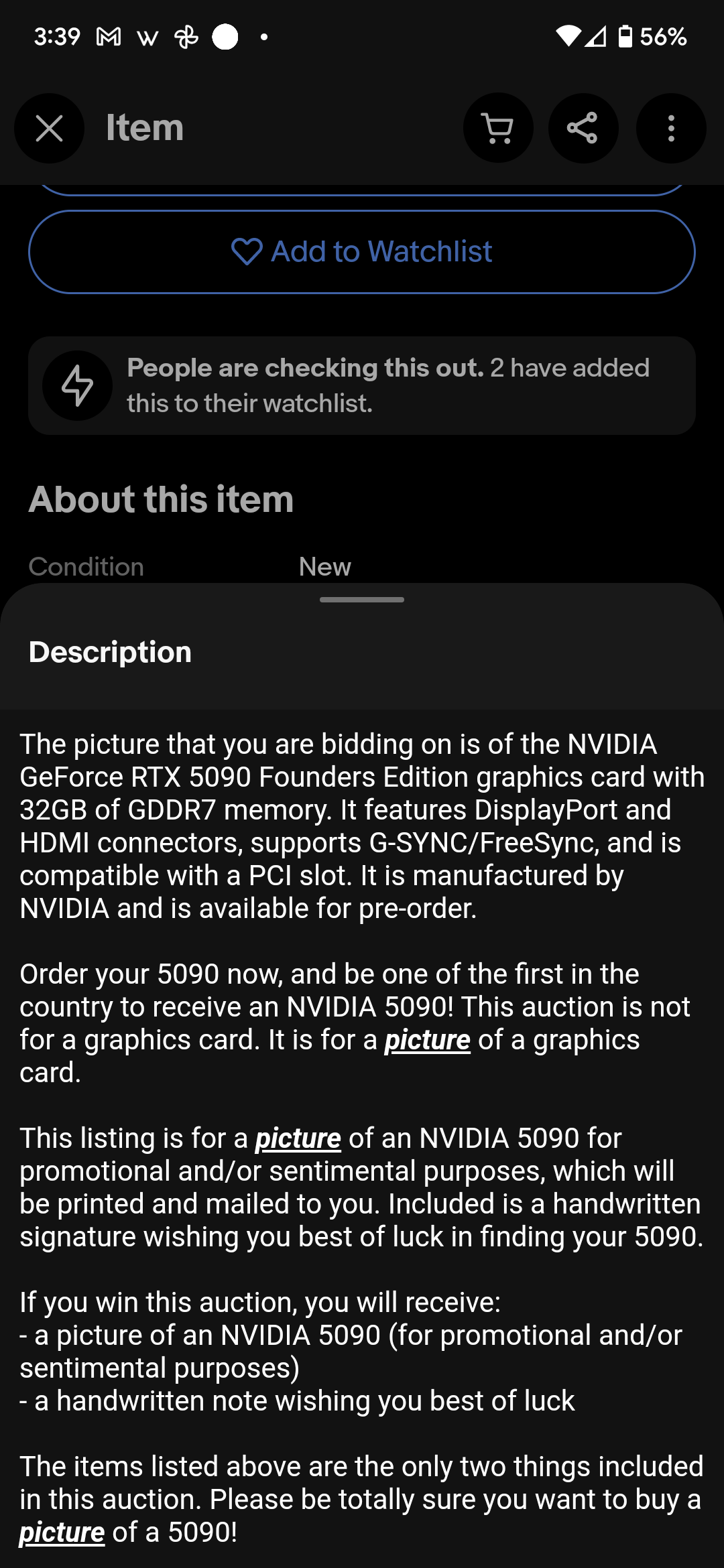- 0 Posts
- 78 Comments

Thanks for sharing this review, it’s great to see your reviews and interviews here.
I’ve seen a similar recent DS-emulation system review and they were playing Rhythm Heaven, and what really looked like it would bother me is the emulation input latency (it appeared roughly 10-20ms). Have you played Rhythm Heaven or other latency-sensitive games and do you notice any input delay?

It’s exceptionally irrational at the moment. Everyone is not just gambling on an irrational self-valuation of the bet, they’re seeing each other’s bets, and that is adding an extra level of FOMO irrationality, increasing the bets even further.
With Trump’s acts of economic self-mutilation already weakening the economy, this is going to be a wild ride when the bubble pops.

Non-console pricing may make it overpriced, and it may be DOA, but the alternative here is worse. Console pricing will lead to a walled garden and enshittification.
If it’s priced like a console and subsidized so that Valve relies on game sales to profit, then they have a huge incentive to lock down the machine with DRM and restrict user ability to install third party launchers, games, etc.
This would not only contradict their Deck strategy, but be a repudiation of one of the last healthy and consumer-friendly open design and product philosophies left among the gaming platforms. So I hope they do not sell hardware at a loss in this case. Let it sink or swim on its merits.

I think it’s genius. The machines are a dopamine bomb. Seeing the coins makes you think you can strategize, and the connection between action and winning is much more visceral and feels more controllable than a slot machine or other casino games. I have similar memories of seeing them in the arcade and thinking they were very tempting, but no way worth putting in real coins.
A game done well is going to be extremely addictive, but if done in the service of a full, fun, not-micro transaction-pushing format, I fully support it. I think it’s going to be huge.

I think those doomsayers will be partially vindicated in the coming months. You can go to Best Buy’s website and order a Switch 2 with no waiting line, no delay. The supply is outpacing demand. Because I think a huge part of the 6 million sold was pent up demand for a new console and the inevitable cumulative brand effect and population increase leading to a larger early-adopter pool.
Unless Nintendo somehow had the ability to increase supply in a way unheard of for launch consoles in the past, I think that they met that early demand, and now it’s going to slow down abruptly. Now they have to convince regular people in a bad economy to spend way more than normal for a Nintendo console, with no Mario or Zelda killer app.
Eventually it’ll be a great selling machine, but these early numbers are misleading.
Guess I’m an outlier. For me, games were the way to disconnect from the stress of relationships. I’ve been an introvert since the beginning, and so games’ positive associations for me are a safe place away from social pressures.
I also imagine every “retro” generation thinks its games are the best. Like, there was a meme post about joy at finding a PS2 torrent recently with strong implied nostalgia, and that’s ok. People usually experience video games at an age where the games teach them archetypical feelings of intellectual pleasure, the first time they experienced joy at solving complex problems for example. That becomes a core association through life.
So I think we’ll all have strong feelings linking the systems we played at our formative years. And again, that’s ok. That we can form such strong associations is an expression of the basic human value of video games, as an art and modern cultural necessity.

Sure, I just mean, look how long BOTW has been sold - it will be a fraction of that length of time before Switches cease being sold. Mostly I was pointing to the system refresh as not only a chance to reissue BOTW, but to reset pricing expectations.
There will be a future where BOTW S2-edition is still being sold and the Switch is not. From them on, BOTW will be a $90 game, since it will be the only way to get it.

The same with Google’s recent Doom demo, this is just for headlines and nothing else. Non-deterministic AI generation is antithetical to what a game is, unless it’s an art game focused on the very fact it’s non-deterministic.
For example I played Super Mario Bros. and notice now if there’s even a 5ms delay in the controls. It’s instantly frustrating that my actions are non-deterministic in that small way. You need the game world to be persistent and reliable, and there is an extremely efficient way to do that right now, with code.
Making AI generate it is a parlor trick that is doubly worse - both unreliable and far more expensive to generate.

The articles have been confusing - I guess they’re announcing a physical location, but also it’s a digital archive you can access on a website. Don’t know why they have a landing page that doesn’t clearly link to it: https://archive.gamehistory.org/
They may just have taken down the link because it’s getting hugged to death.

Unfortunately, maintaining hacked forked versions of specific apps is even more time consuming for devs than it is for us to just spoof our security environment on our phones. Popular apps like YouTube have such versions but that’s only because the userbase is there.
I’ve seen some XDA discussion on hacking apps but you’re actually just learning to become a programmer/hacker at that point. If you have a specific app, and you’re not able to hack it yourself, unfortunately spoofing via Magisk & Tricky Store is the only sustainable way.

There are three levels of security, and it depends on what your app will check for.
Basic: This is essentially unsecure at this point, and any app that checks for security will almost certainly check for a higher level. If you root your phone, you likely will just show “basic.” Netflix will be low quality and most banking apps will not work, even if you use the default root features to hide your root.
Device: This is considered the norm for security checks and current peak efficiency point for accessing secure apps. You can spoof this level of security with Magisk if you are rooted (optionally unlocked), plus Play Integrity Fix as a plugin to Magisk. Note that you have to keep it updated - it is based on spoofing a device fingerprint that is shared at the plugin-level, and which Google periodically blocks. You can also learn to find your own fingerprint if you are tech savvy, but it could still be blocked and can be time-consuming. This is the minimum level to use Google Wallet NFC payments and most banking apps. If done right, Netflix will stream high quality as well.
Strong: This is the highest level of security, which an app thinks will only be present if you have a fully locked bootloader and are unrooted. Some banking apps require this now, but a year from now, it likely will be the norm. A year ago, this wasn’t able to be spoofed, but now there is something called Tricky Store that can spoof this and show Strong security to apps even when unlocked and rooted. However, it is much more complicated to set up - be prepared to join sketchy Telegram groups and scrounge for elusive security files.



Wow, thanks!